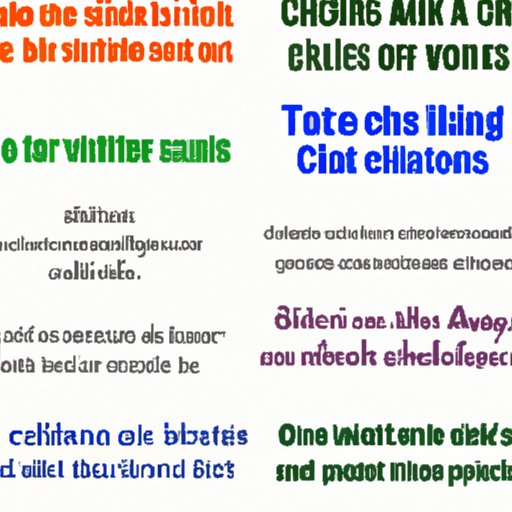
I. Introduction
Citing sources is an important aspect of academic research and writing. It allows readers to verify information, gives credit to original sources, and avoids plagiarism. When you use a quote from a book in your writing, it is crucial to cite the source correctly. This article will provide a step-by-step guide to citing quotes from books, list the necessary details to find source material, and cover the most commonly used citation styles. This article is intended for anyone seeking to improve their citation skills.
II. Step-by-Step Guide to Citing Quotes from Books
A citation is a reference to a source of information used in research or writing. It typically includes the author’s name, publication date, title, and publisher information. Here’s a simple step-by-step guide to citing quotes from books:
1. Identify the author, title, and publication date
2. Determine the type of publication (if necessary)
3. Find the specific page(s) where the quote is located
4. Choose a citation style (APA, MLA, Chicago) and format the citation accordingly
5. Place the citation after the quote or at the end of the sentence (depending on citation style)
It’s essential to include all the necessary details to find the source material. This information helps readers locate and verify the information you used in your writing.
List of Necessary Details:
– Author’s name (first and last)
– Book title
– Publication date
– Publisher information
– Page numbers
Citation Styles:
There are several citation styles used in academic writing; the most common include APA, MLA, and Chicago. Each style has specific guidelines for formatting citations, including variations for different types of sources. Here are some examples of book citations in each style:
APA Style:
Author’s Last Name, Initials. (Year). Book Title. Publisher Name.
MLA Style:
Author’s Last Name, First Name. Book Title. Publisher, Publication Date.
Chicago Style:
Author’s Last Name, First Name. Book Title. Publisher’s Name, Publication Date.
III. Infographic on Citing Quotes from Books
To help simplify the citation process, we’ve created an infographic that illustrates the citation process. It includes several examples of citation templates for different citation styles. Infographics can be a useful reference for readers who want to quickly learn how to cite a quote from a book.
IV. Common Mistakes When Citing Quotes from Books
The most common mistakes people may make when citing quotes from books include incorrect formatting and incomplete information. To avoid these mistakes and ensure accuracy, make sure to follow the guidelines for the selected citation style. It’s also essential to double-check all the provided information, including the author’s name, publication date, and page numbers. A fraudulent citation can harm the writer’s reputation and lead to academic dishonesty. Therefore, one must be cautious when choosing reputable sources of information.
V. In-Text Citations
In-text citations allow readers to verify the sources of information used in research and writing. They can be used for different types of quotations, including direct and indirect quotes. Parenthetical citations are often used for in-text citations; they provide the author’s name and page number in parentheses at the end of the quote. Footnote citations, on the other hand, are typically used for more detailed information, like a citation for a website or article. These citations are placed at the bottom of each page, with the corresponding number located within the text itself.
VI. The Importance of Citations
Citations are an essential aspect of academic research and writing. They allow readers to verify source material, add credibility to arguments, and avoid accusations of plagiarism. Including accurate citations helps to build credibility and trust with readers. In addition, citations are often required for academic assignments, so it’s essential to master the citation process. For these reasons, it’s critical to find and cite trustworthy, reliable sources of information.
VII. Citation Tools
Various online citation generators, apps, or web-based services can help writers accurately cite sources in various citation styles. These tools can help save time and improve citation accuracy. There are many citation tools available today, including Citation Machine, EasyBib, and Zotero. When choosing a citation tool, make sure to consider individual needs, including the citation styles required, ease of use, and compatibility with research software.
VIII. Conclusion
Mastering the citation process is crucial for academic research and writing. This article has provided a step-by-step guide to citing quotes from books, along with a detailed description of necessary details and commonly used citation styles. In addition, we have highlighted the importance of citations, the different types of in-text citations, and tools to make the citation process more manageable. By following the guidelines provided in this article, writers can accurately cite sources, avoid plagiarism, and maintain academic integrity.
Now, it’s time to take the first step in refining your citation skills and become a successful citation writer.




